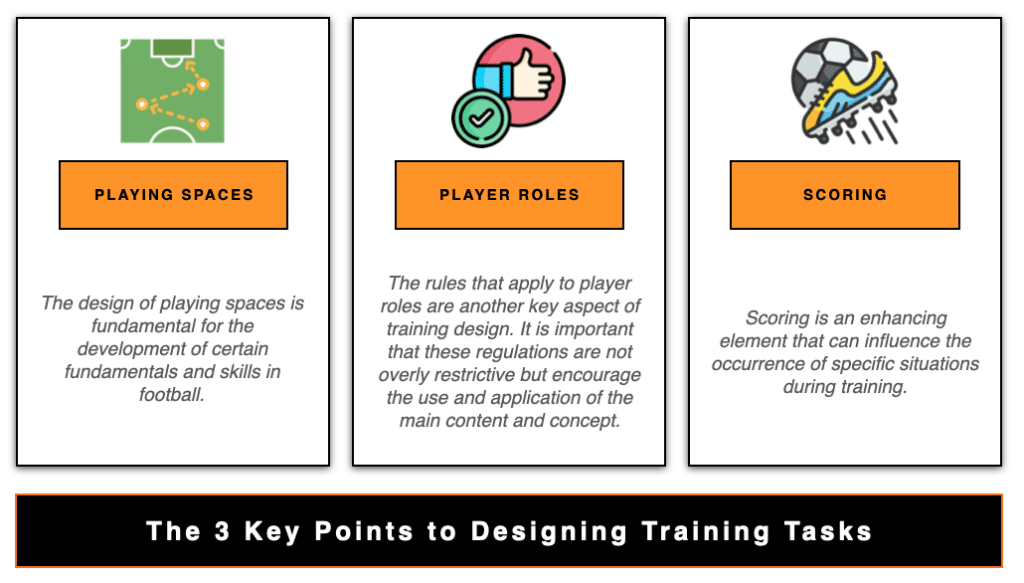Training is not just a routine; it is at the heart of any footballer’s development. However, beyond the simple act of training, the intelligent and strategic design of training sessions makes the difference between solid progress and stagnation in performance.
In this article, we will explore how the training environment, when meticulously designed and structured, can become a powerful catalyst for growth and sporting excellence.
Every aspect of the environment in which a footballer develops, from the playing spaces to the rules that govern interactions, plays a crucial role in his or her evolution as an athlete.
These elements, when combined and applied strategically, transform training sessions into dynamic and effective experiences that drive learning and sporting performance. Through a formational and educational approach, we will explore how to optimise each of these aspects to maximise the potential of each training session and, ultimately, the holistic development of players.

The Rules:
The introduction of rules within training tasks is an often underestimated but very important aspect. These rules, which can relate to playing spaces, player roles and scoring, channel the athletes’ attention towards the specific content and task to be worked on.
1.- Playing Spaces: The basis for skill development
The design of playing spaces is fundamental for the development of certain fundamentals and skills in football. Depending on the content and the task to be trained, as well as the number of participants, the dimensions and characteristics of the spaces must be adapted.
For example, in order to train playing in behind, long spaces are needed to allow for the emergence of this concept. In addition, the application of spatial rules, such as restricting or enhancing certain areas, can further improve the effectiveness of the training.
2.- Player Roles: Balancing freedom and constraints
The rules that apply to player roles are another key aspect of training design. It is important that these regulations are not overly restrictive but encourage the use and application of the main content and concept.
For example, if the objective is to work on dribbling, restrictive rules should be placed on the defensive role to facilitate situations where dribbling is necessary to solve them.
3.- Scoring: An enhanced element
Scoring is an enhancing element that can influence the occurrence of specific situations during training. However, it is crucial to formulate scoring appropriately so that it does not distort the reality of the game or limit the development of the athletes.
Conclusion
In summary, designing effective training requires a careful approach to spaces, rules and scoring. By integrating these elements strategically, coaches can create learning environments that drive skill development and athlete performance. Continuing to explore and apply these strategies is critical to further advancing the world of sport coaching.








